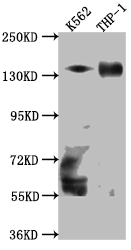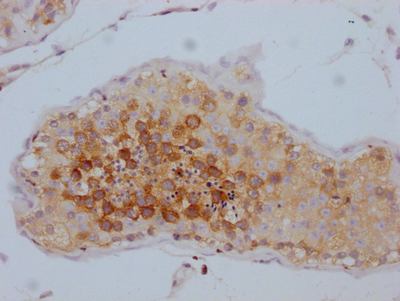TACC3 regulates spindle organization during mitosis and also regulates centrosome-mediated microtubule nucleation by affecting γ-Tubulin ring complexes. In addition, it interacts with different proteins such as ch-TOG, clathrin, and Aurora-A, to function in mitotic spindle assembly and stability. By forming the TACC3/ch-TOG complex, TACC3 acts as a plus end-tracking protein to promote microtubule elongation. Aberrant expression of TACC3 has been observed in various human cancers and has been shown to promote tumor growth in vivo. In human cells, TACC3 has been shown to be associated with the organization of the mitotic spindle poles. Subsequent studies revealed that TACC3 depletion induced chromosomal misalignment reduced spindle stability, and triggered apoptosis in cells.
The recombinant TACC3 antibody was produced by cloning antibody genes into an expression vectors, which were subsequently introduced into mammalian cells to provide animal-free antibody production. This TACC3 antibody has been validated in ELISA, WB, IHC. It has the features of improved affinity, stability, and consistency between different batches.







